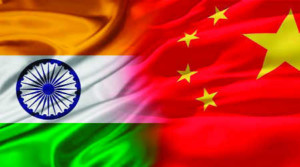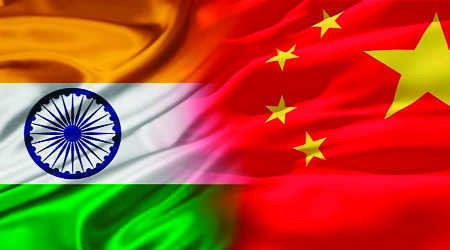 BEIJING: China said today it will resume sharing with India the hydrological data of the Brahmaputra River as top water resource officials of the two countries wrapped up two-day talks, the first after Beijing last year stopped providing the data crucial to predict floods.
BEIJING: China said today it will resume sharing with India the hydrological data of the Brahmaputra River as top water resource officials of the two countries wrapped up two-day talks, the first after Beijing last year stopped providing the data crucial to predict floods.
“On the basis of humanitarian spirit and our shared will to develop bilateral ties we will continue with the cooperation on hydrological information cooperation,” Chinese Foreign Ministry spokesman Lu Kang told a media briefing here.
He was responding to a question whether China will resume sharing of the hydrological data on Brahmaputra River, which Beijing suspended last year stating that it could not share it with India due to upgradation of data collection station in Tibet.
China’s announcement to not to share the data came soon after the 73-day long stand-off between Indian and Chinese troops at Dokalam over Chinese military’s plans to build a road close to India’s Chicken Neck corridor connecting North-Eastern states.
A team of officials of India’s Ministry of Water Resources held talks with their Chinese counterparts on the cooperation of trans-border Rivers in the last two days at the Chinese city of Hangzhou, the first after Beijing last year stopped providing the data.
Lu said during the talks the two sides reviewed the achievements of the previous meetings as well as bilateral cooperation on emergency and response and hydrological information.
“The two sides have agreed to continue with such cooperation. On the grounds of humanitarian principles and the basis of bilateral relations China will continue with this cooperation with the Indian side on the provision of hydrological information and emergency response cooperation,” Lu said.
Asked whether China would resume the data, Lu said “since you made it quite clear”, China will continue with the cooperation on hydrological information cooperation.
The two-day talks of the 11th meeting of the India-China Expert Level Mechanism (ELM) on Trans-Border Rivers concluded yesterday at Hangzhou, a statement from the Indian Embassy here said today.
The Indian side was led by Teerath Singh Mehra, Commissioner (B&B), Ministry of Water Resources and the Chinese side by Yu Xingjun, Consul, Department of International Cooperation Science and Technology, Ministry of Water Resources.
The meeting which was held in a “cordial and friendly” atmosphere reviewed the progress made since the earlier meetings of the ELM and their continued cooperation on provision of hydrological information and emergency management in respect of trans-border Rivers, the press release said.
The officials also reviewed the data utilization report upon provision of hydrological information provided by China to India in flood season on Brahmaputra and Sutlej Rivers.
The institutional mechanism of the ELM was established in 2006 to discuss various issues related to trans-border Rivers.
Under existing bilateral Memorandums of Understanding, China provides to India hydrological information of Brahmaputra River (Yarlong Zangbo) and Sutlej River (Langqen Zangbo) during the flood seasons.
Under the arrangement, China provides flood season data of the Brahmaputra River between May 15 and October 15 every year.
China has been building major dams on Brahmaputra river to generate hydel power. It operationalised Zangmu hydroelectric project in October, 2015 and three more are under construction.
While dams raised concerns of water shortages in India and Bangladesh, which are lower riparian states of Brahmaputra River, China said its dams were aimed at generating power and not storing water.
The data shared by upper riparian state, China, to lower riparian states, India and Bangladesh is essential every monsoon to allow anticipation of the flow of the water and take necessary measures to deal with flooding in India’s north-eastern States. -PTI







